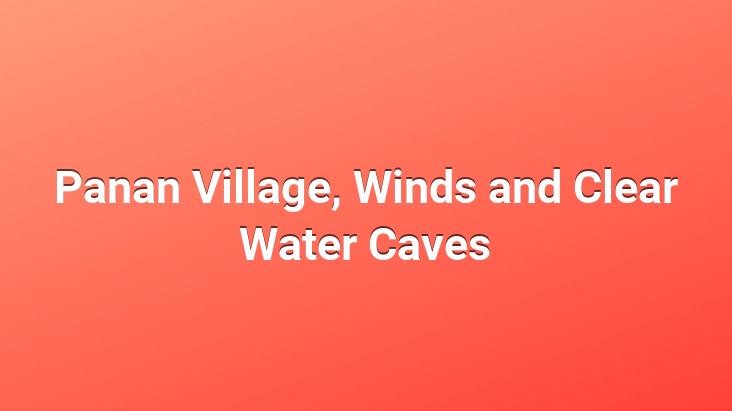After crossing the suspension bridge over the Melinau River at the
Mulu National Park entrance, leaving our backpacks in the park security room, we went down to the river behind the park office at 9:15 am as a group of 7 people.. We lined up on 2 boats with thin and long motors and set off.. Both sides of the river are covered with dense, almost untouched forest.
If I have the opportunity, I will do my research on the comparison of the two concepts between jungle and forest and publish it.. The trees are bent over the river and there are vines and plant species hanging from their branches towards the river.. On the banks of the river, the tree trunks brought by the river are full of logs.. It’s exciting to hear the sound of the forest in your ears as you sail upstream on the Melinau river.. Remember the Tarzan movies.
Penan Tribe
After a half-hour ride on the river, we arrived at the village of the Penan tribe, who lived in this region for thousands of years.. All of the houses are made of wood and the houses are built on poles to protect against flooding.. There are more than 4,500 of these houses called Longhouses in Sarawak.. Sometimes more than 100 families live in these houses, which are separated from each other by partitions.
Sarawak has 27 different ethnic groups.. Each ethnic group has its own languages and cultures.. The most populous ethnic group is the Iban, who in the past feared skull hunting.. According to the Iban spiritual belief, if you cut off the skull of someone from a rival tribe and bring it home, it meant health and a bountiful crop.
Sounds so cruel, doesn’t it? But 2. The Japanese, who occupied Borneo for 10 years during World War II and did not have the word surrender in their dictionary, killed more than 5 million women, men and children.. Who is more savage? Are these primitive tribes who occasionally go on skull hunts for good luck, or the people of the modern world with their incendiary, destructive weapons, or even atomic bombs?
All of the indigenous peoples living in Borneo, dating back 3,000 years They are called the Beating People. They fought with the American soldiers against the Japanese in World War II.. This group, called the Z Special Unit, killed more than 1,500 Japanese soldiers in the war.. American soldiers learned and continued this primitive tradition from them.. They cut the skulls of the Japanese soldiers they took captive, as is the custom of the local tribes.. Some of them even made souvenirs for themselves or their loved ones.. Like primitive tribes, they even started to carry the items they made from the bones of the Japanese soldiers they hunted.. Even though it was banned after hearing the events, it was continued.
In the small market established in Penan Village, which we started to visit, handmade sculptures, necklaces, mats and trinkets of the local people are sold.. All of the people in the stalls are women.. Right next to the market place, there are large boards promoting the language, history and culture of Penan Village and its people.. I bought a few biscuits and cans of corn from the grocery store in the village.. Since we will stay at The Pinnacles camping area for 2 nights, we have to bring our own food.
Winds and Clear Water Caves
Leaving the village, we got back to our boats and set off.. There are girls and women washing their clothes and bathing at the edge of the derby.. Continuing along the Melinau River, we docked at the pier for our next stop, Winds and Clear Water Caves.. We gathered in front of the Winds Cave and listened to the information given by our guide. It is named because of a strong wind breeze at certain points in the cave.
You can feel the air flow from large cave sections to small sections very comfortably on your face.. You know who examines the cave by walking the 350-meter walking path inside the cave.. Inside you can see interesting stalactites and stalagmites and limestone formations.. One of the rocks that was interesting to me was the thousands of protrusions around one cm in length, located just near the entrance of the cave.. What was interesting was that these tiny pointed protrusions were elongated towards the light coming from the entrance of the cave.. As I understand it, the tiny fungi and plants living on the rock also cause the rock to take shape.. A rock growing towards the light!
Winds Cave After visiting the Winds Cave, we had to bend over to avoid hitting your head, with the view of the river flowing in sparkling green color 50 meters below you, built on stakes driven into the cliffs. We reached the Clear Water Cave by walking a 500-meter wooden road under the stalactites on the outside.
In this cave, a roaring river flows under the ground, covering a distance of 170 km before coming here.. Due to the lack of light in the caves, they were too big for flash photography, and we did not have a tripod, we could not take decent pictures.. It is a pity that the photographs we took could not describe these beauties.
We went down from the Clear Water Cave and rested in the area built by the river.. This is also a place where you can have your brought lunch and swim in the crystal clear, green river for those who wish.. After an hour’s lunch and rest break, we got on our boats again and continued on our way in the opposite direction of the current of the river.. Parts of the river are very shallow. An officer in front of the boat directs the boat according to the shallowness of the river with a long pole in his hand, while the master officer behind the boat manages the motor boat.. In some shallow places, you can hear the propellers of the boat’s engine hitting the pebbles in the river.
At some points in the river, when our boat could no longer move forward, we jumped off the boat and started pushing.. The other group, who is from Poland and we went on the tour together, were prepared for this, because they all wore sandals.. I tried pushing the boat barefoot first.. It was both difficult and painful to push the boat and keep the balance on the big pebbles and in that strong current.. We got off the boat and pushed the boat several times.. In one of these, I had to say goodbye to my flip-flops, which I have kept in my bag on my trips for 7 years, because I had made the mistake of walking with it in the strong shallow current.. However, I would need him badly at the campsite.
Finally, we got off the boat at a point where it was no longer possible to go down the river.. From here, we need to reach the camping area by walking 8 km through the jungle.. We put on our walking shoes, sprayed insect repellent sprays on our bodies and hit the road.. To our right and left is shallow and full of tall trees. Some are thin, while others are large enough for a few people to wrap their arms around.. The sounds of birds, frogs, insects and other creatures living in the forest ring in your ears.
The path is smooth, there is almost no climbing or difficult point, we continued walking at a high pace.. Sometimes we walked on the suspension bridges built over the river in pairs or in pairs.. The weather is very humid and hot, and walking while drenched and losing a lot of water is tiring even on this flat path.
Towards the middle of our walk, I saw a movement in front of my foot and my companion walking behind me reflexively told Farid to stop.. At that moment, we realized that the thing that was between us and moving was the snake trying to carry the frog it had hunted.. When you say snake, don’t let such a big and huge creature come to your mind right away.. It was a small, slender snake, brown, difficult to distinguish from grasses and tree roots.. He was struggling to carry the large frog he had hunted.. We don’t know if it’s poisonous, but he must have poisoned the large frog he hunted, considering it was paralyzed.
As far as I know, we were on the island with the most snake species in the world.. Actually, I always wanted to see snakes if possible.. Yes, I like snakes. Many cobras and pythons live in this area.. Actually, I would like to participate in walking and tours to see a python, but unfortunately there was no. At least it was this little snake that fell into my fortune.. We didn’t know if this snake was a baby that we could almost step on while walking or if it was such a small species.. I took a twig and checked the frog, it could move its feet, it was alive, but it couldn’t escape.. After throwing the frog a little far on the walkway, we continued on our way.. Our snake immediately jumped back towards its prey and started to drag its prey.
After a tiring 8 km walk, we finally arrived at the campsite.. There is a lush green mountain rising upright in front of the building in this camping area, which was established right next to the river in a magnificent valley.. Likewise, behind us was a steep slope.. A few rooms have mats laid out on a high-set counter. Up to 20 people can sleep comfortably in these areas under the roof without doors and windows.. Mosquito nets can be rented here.. You can find drinking water, hot water, cutlery, plates and kitchen utensils in its large kitchen.. They also have the necessary equipment for cooking.
After choosing one of the mats and leaving our belongings there, we immersed ourselves in the cold water of the river.. My body was like dipping a coal from a fire into cold water, comforting and refreshing indeed.. After cooling off and having fun in the cold water of the river for half an hour, we spread our sarong on the grass and took a nap.. The campsite has more than 20 travelers. While some of them had completed the ascent of The Pinnacles, there were groups like us who had just arrived.. Some visitors came by renting their own guide.
We were told that we had to bring our food ourselves, but we learned that the staff here can also provide meals to those who want it.. Prices were reasonable, albeit slightly higher than usual.. If I had known, I wouldn’t have carried any food with us.. However, I took biscuits, 5 noodles, 2 liters of orange juice, 2 bottles of drinking water, tea and bananas.. It was not easy to walk 8 km in the heat of the forest with these.. Maybe I should do more research before I set off, I think it’s very difficult for me to do this.. I am one of those who surrender myself to the road more.
Day 419: Borneo:7, Mulu National Park, September 27, 2011







